
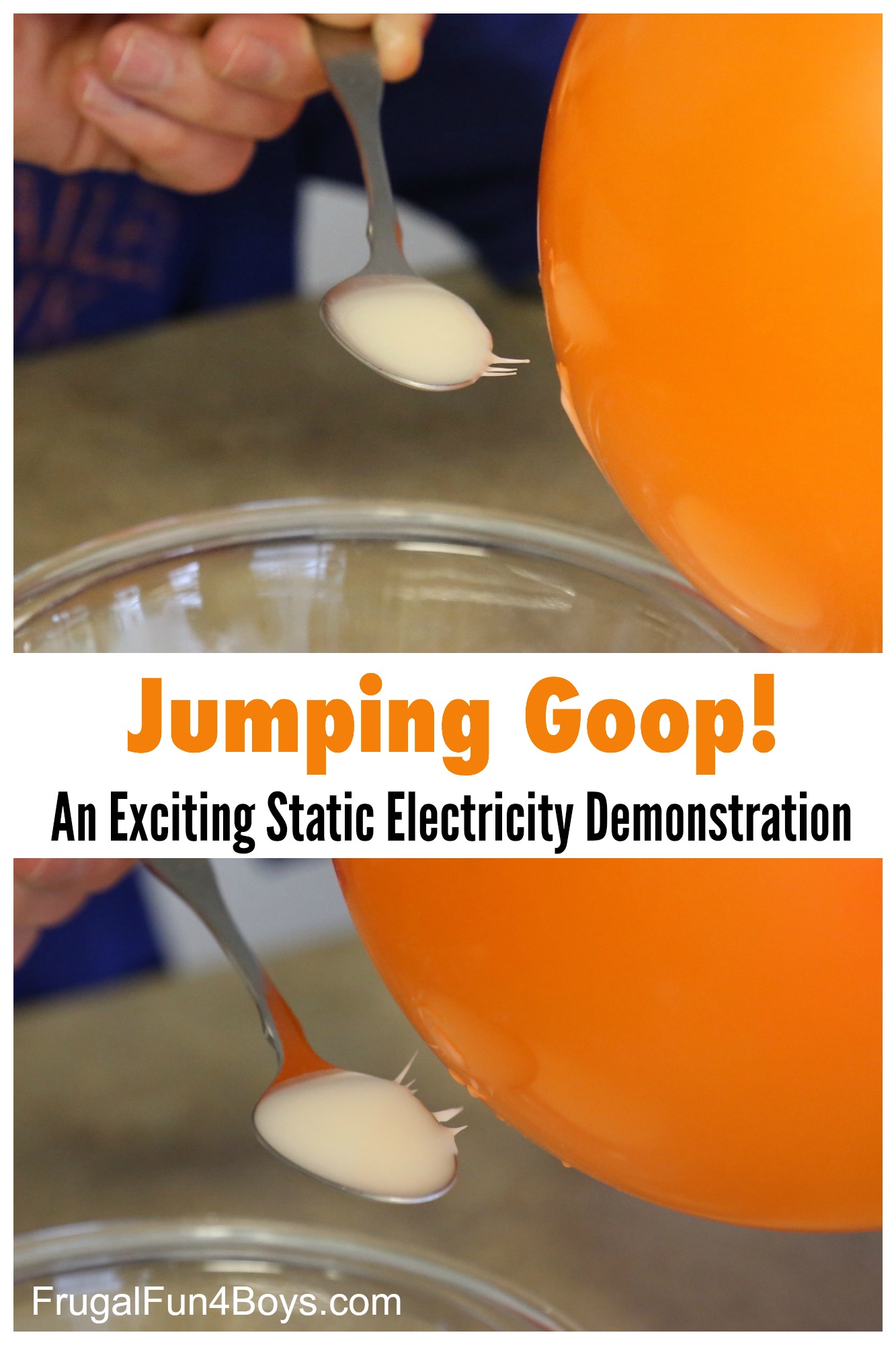
This static electricity demonstration is simple to do, and you probably have the supplies on hand.
Mix 1/4 cup of cornstarch with 1/4 cup vegetable oil. Stir it up until it makes a slimy liquid. We tried to make ours a fun color, but food coloring won’t mix with oil! Not at all! So don’t do that…
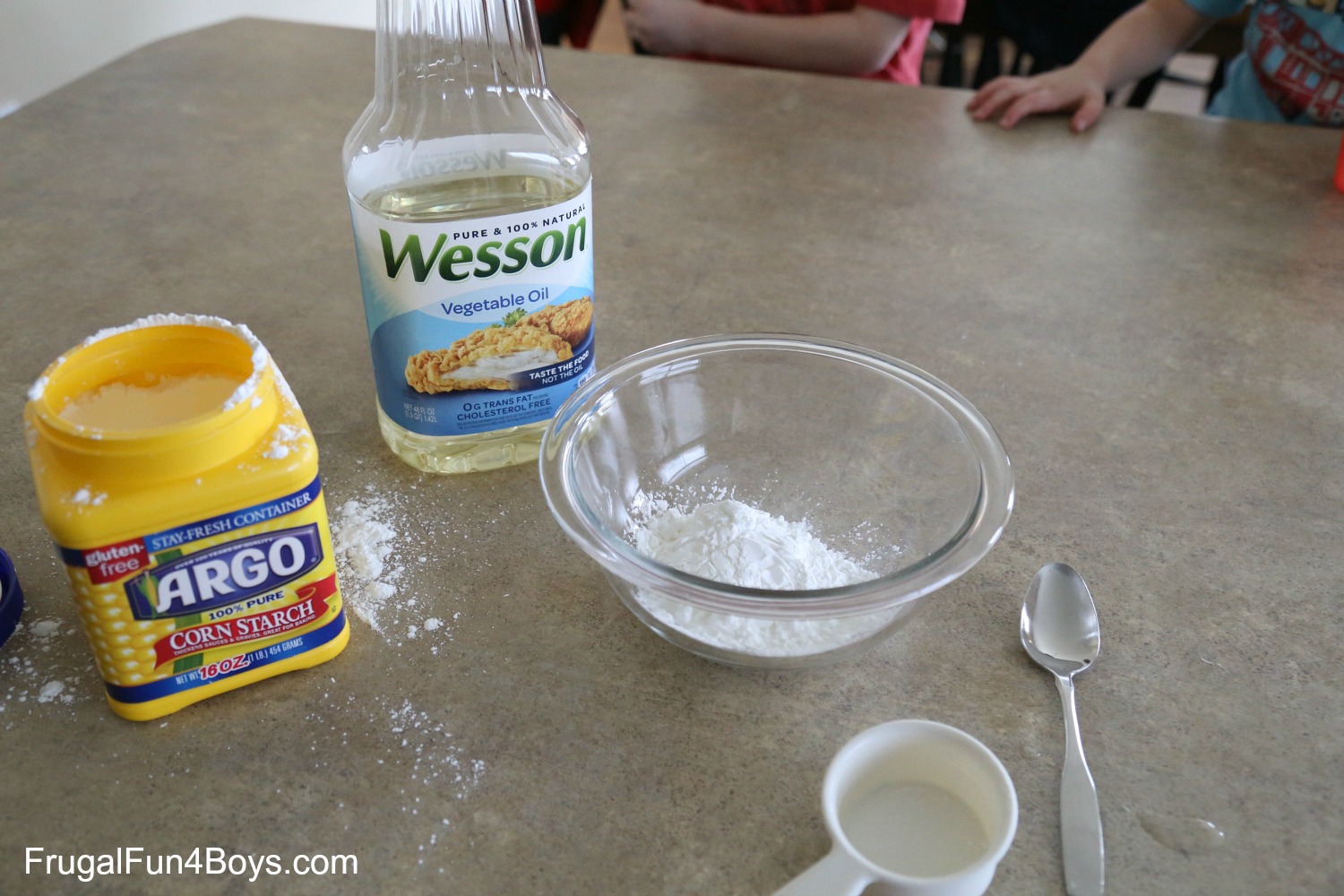
Then blow up a balloon. Rub it on your hair to make it electrically charged.
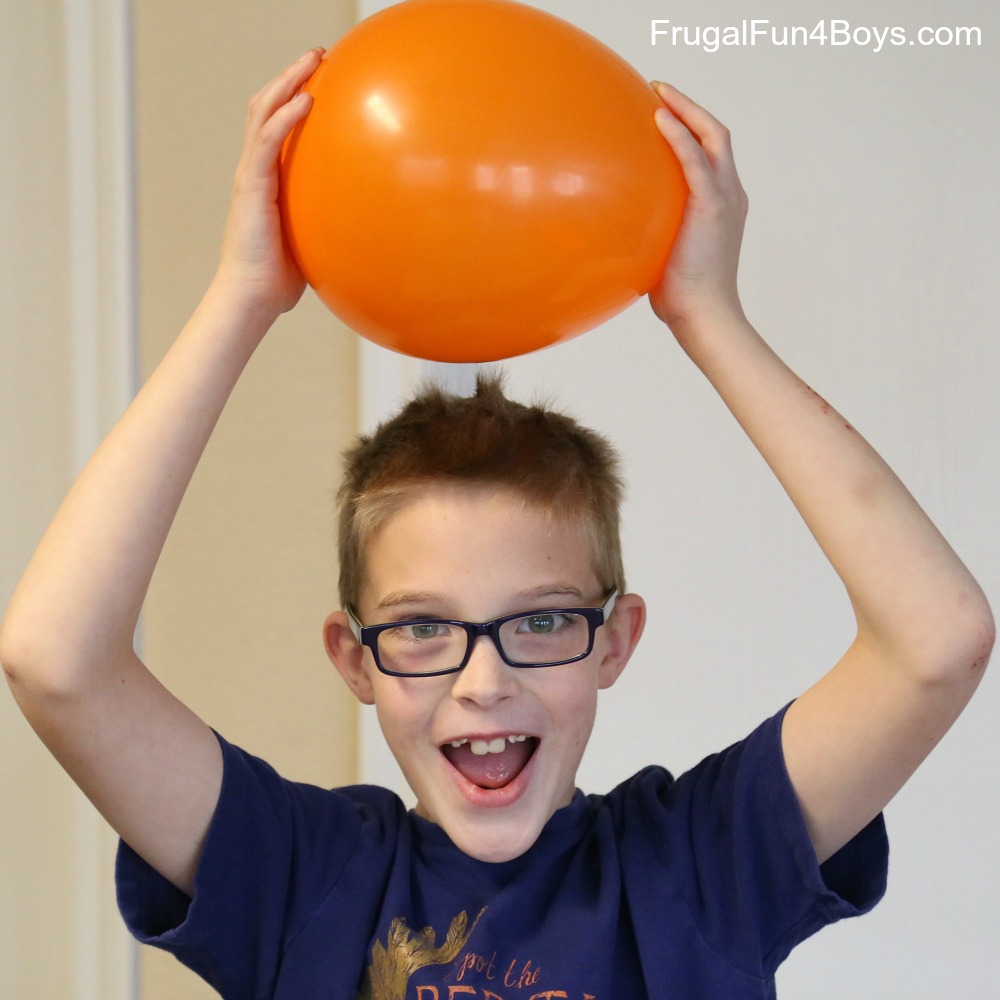
Hold the balloon very close to a spoonful of your cornstarch goop. Watch the goop start to move! If the balloon gets close, enough, the goop will jump from the spoon to the balloon. Whoa!
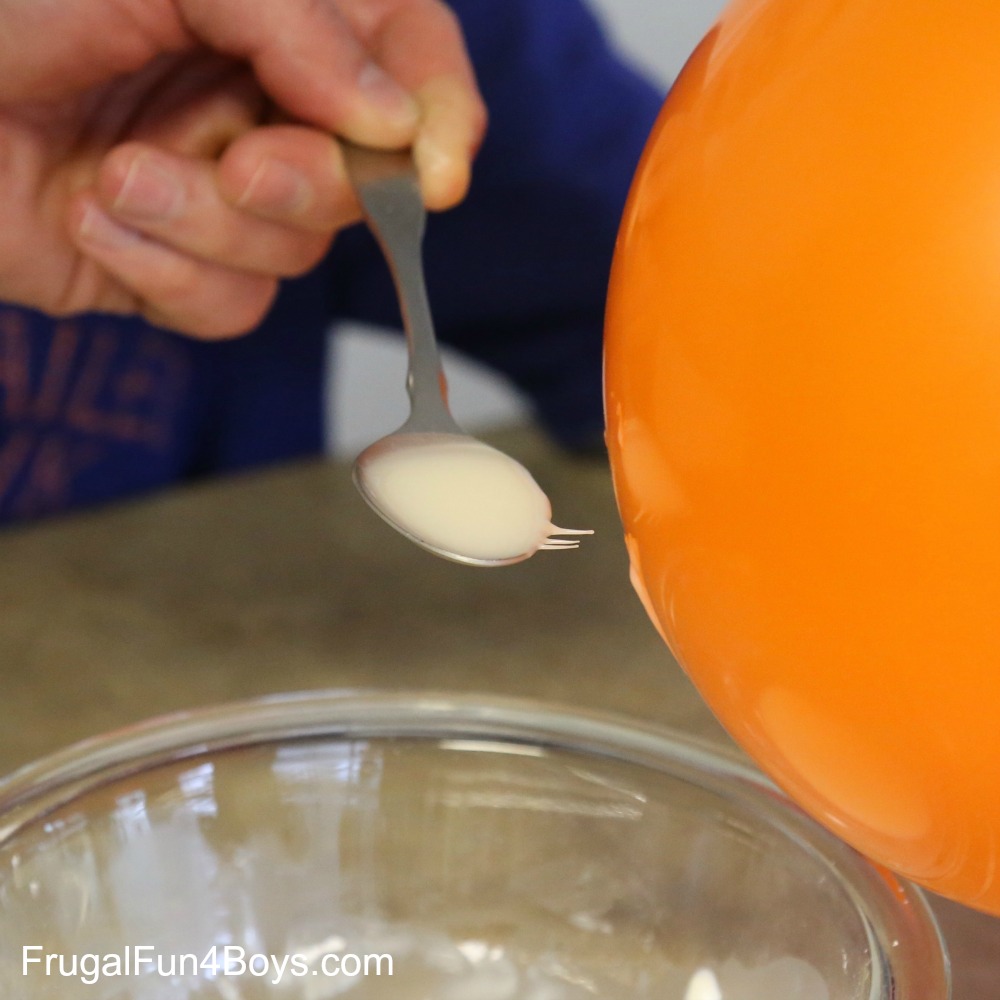
Science is so cool!

Why does it do that??
When you rub the balloon on your hair, electrons from the molecules in your hair rub off onto the balloon. This gives the balloon a negative charge, and it is attracted to the positive charges within the goop, specifically within the cornstarch.
If you try the experiment with just plain cornstarch, the cornstarch will be attracted to the balloon. We tried it, and the cornstarch jumps off the spoon and creates a white dusting on the side of the balloon. Adding oil to the cornstarch holds it together and makes it behave in a more interesting way!
If you have ever made “oobleck” by mixing cornstarch and water, you know that this non-Newtonian fluid is pretty cool stuff. It behaves like both a solid and a liquid depending on whether it’s being squeezed or dripped off a spoon. Cornstarch and oil behave differently, however. This did not surprise me because oil is a non-polar substance, while water is polar. The cornstarch and oil mixture is a smooth, gravy-like liquid that flows easily.
We wondered if the experiment would work with water, so we tried it! If you drip a stream of water from a spoon close to the charged balloon, the water will jump onto the balloon! However, it’s harder to see what’s happening. Water molecules all have one end with a slight positive charge and one end with a slight negative charge because of how the electrons are shared between the hydrogen and oxygen atoms. The polarity of water allows water molecules to form a lot of weak hydrogen bonds with each other, which gives water a lot of surface tension.
The cornstarch and oil flow in a tiny smooth stream like this:
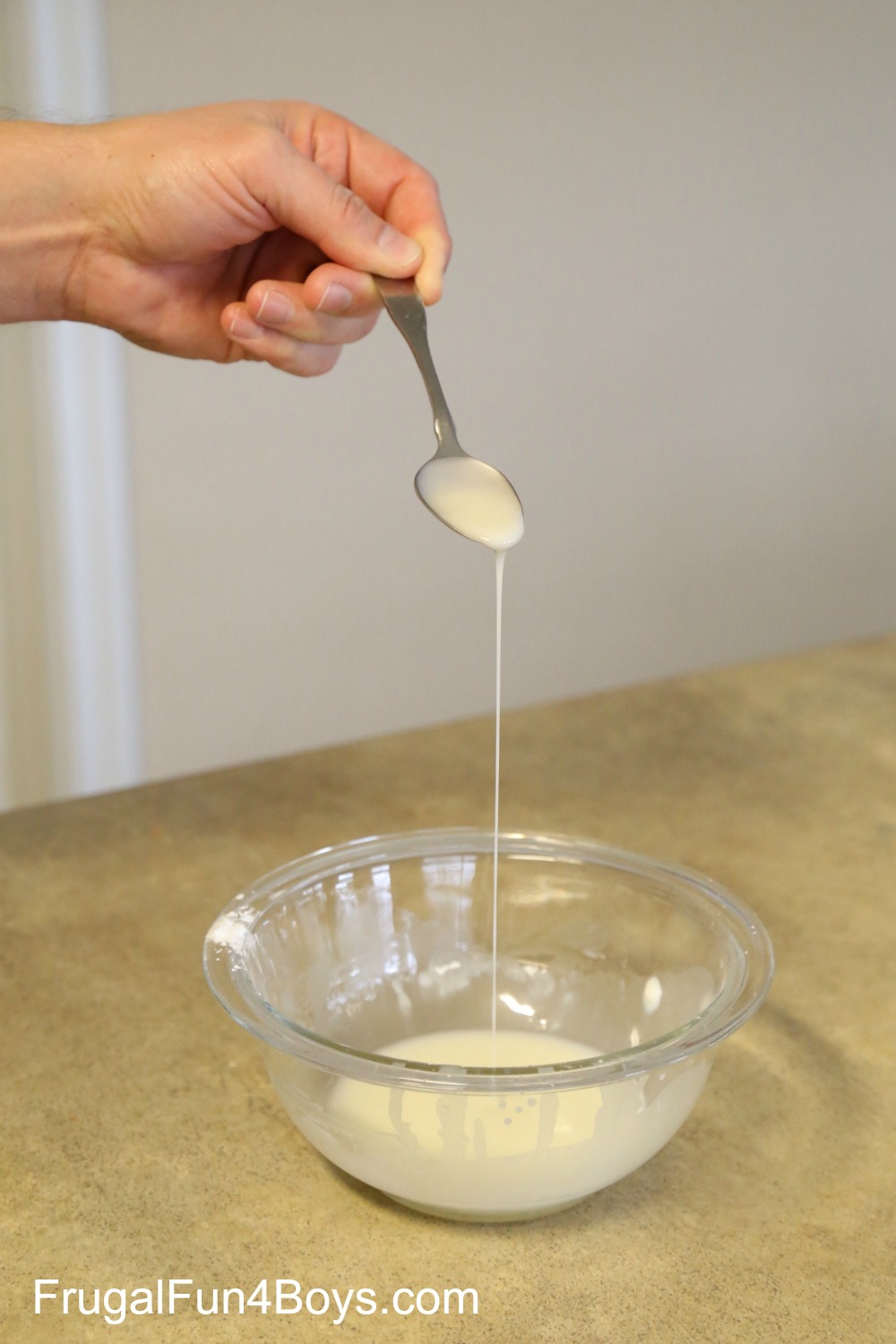
While water, being polar, drips in little blobs like this:
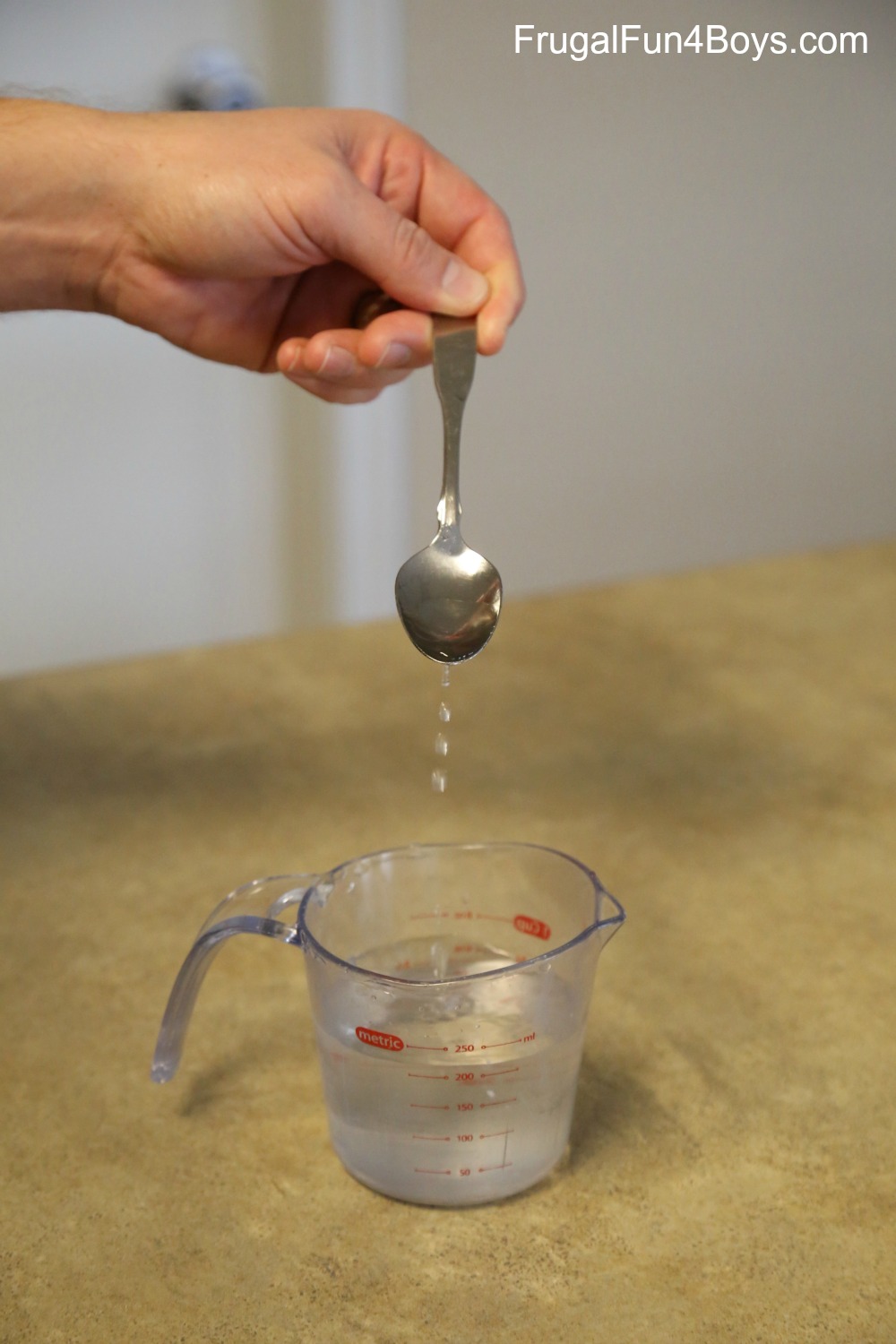
You can drip the cornstarch and oil goop and watch it jump to the balloon, or you can simply hold the spoon close to the balloon and watch it move. You can also make a stream of goop stop flowing by holding the balloon close to it!
We were curious if this experiment would work just as well with cornstarch and water. We noticed a very slight attraction (maybe?) between the balloon and the cornstarch and water goop, but the cornstarch and oil was much more impressive.
Note that any static electricity demonstration will work the best on a low humidity day. Winter is a great time to do this when the heater is running the the air is very dry!
Original article and pictures take http://frugalfun4boys.com/2016/01/21/jumping-goop-static-electricity-demonstration/ site
Комментариев нет:
Отправить комментарий